Reviews
Mormons & canyons: a road trip through Utah

Utah is best known as the home of the Mormons, whose headquarters are in Salt Lake City in the north, and for its incredible canyons and landscapes, found in the national parks of the south. This combination of weird and wonderful make it a fascinating destination for a classic American road trip and is an alluring destination for keen photographers like me.
The dominance of Mormon architecture and culture provides Salt Lake City visitors with a distinctive experience. Despite that, it is easy to eat and drink well in this city and there is also a thriving live music scene. Take your cue on where to eat and drink from SLUG (Salt Lake City Underground) magazine which also has a helpful news and events section.
The most opulent hotel in Salt Lake City is the Grand American. Aside from the spacious, comfortable rooms, the pleasant outdoor pool, the luxurious spa and the delicious cocktails, it has the added benefit of being visible from most parts of the city, making your journey “home” pretty straightforward. Many of the rooms enjoy stunning views of the mountains which provide a dramatic backdrop to the city.
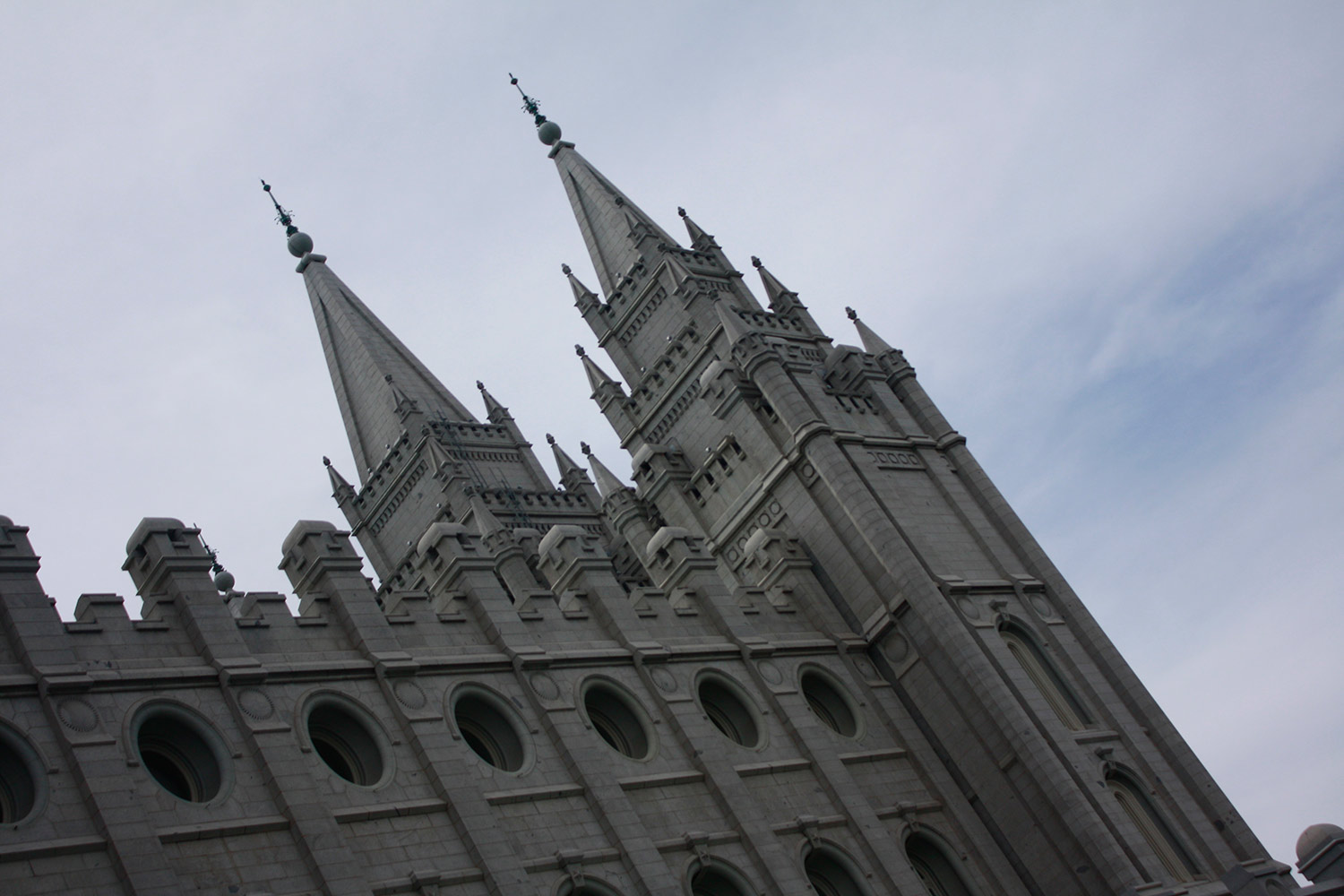
The main attraction is of course Temple Square district and the various sights around, including the domed Tabernacle and Brigham Young’s Beehive House. You will doubtless be approached by one of the committed missionary Sisters. Spending some time chatting to them is an intriguing way to get a direct insight to Mormon life and beliefs.
Although you can’t go into the Temple itself unless your name has been committed to the Book of Mormon, there is an excellent model in the visitors’ centre and some wonderful photos of its forty year construction. And it is definitely worth timing your visit to coincide with a performance by the Mormon Tabernacle Choir.
Apart from their remarkable beliefs and practices, the most striking thing about the Mormons in Salt Lake City is the smell of money. Everything and everyone in and around Temple Square is immaculate. Walk a few blocks away from this area and you will find a contrasting world and a more typical American city experience with signs of homelessness and deprivation.
Perhaps surprisingly, founder Joseph Smith claimed he received a revelation from God in upstate New York in the 1820s – first through an angel, and then through a book he found inscribed on golden plates. He says he translated the plates into the Book of Mormon, which became the bible of the Church of Jesus Christ of Latter-day Saints. Facing hostility from non-believers for their unique views, in the 1840s Mormons followed their leader Brigham Young on the pioneer trail to Utah. According to the Book of Mormon, after Jesus’ resurrection he visited America. And Mormons believe that when Jesus returns to earth he will go first to Jerusalem and then to Missouri. Polygamy is enshrined in the Mormon Scriptures as necessary for obtaining “godhood”. Mormons oppose abortion. They also oppose gay marriage and believe homosexuality is a sin. Unmarried sexual acts, pornography, gambling, tobacco, alcohol, tea and coffee are also on the list. The doctrine that black skin is a punishment was renounced only in 2013. A prominent Mormon, Mitt Romney, was the Republican nominee for US President in 2012.
It is a four and a half hour drive from Salt Lake City via Price to Moab – the adventure-orientated town which serves as a base for visiting Arches and Canyonlands National Parks. The journey south gives you a taster of the dramatic scenery and vibrant colours which await further south.
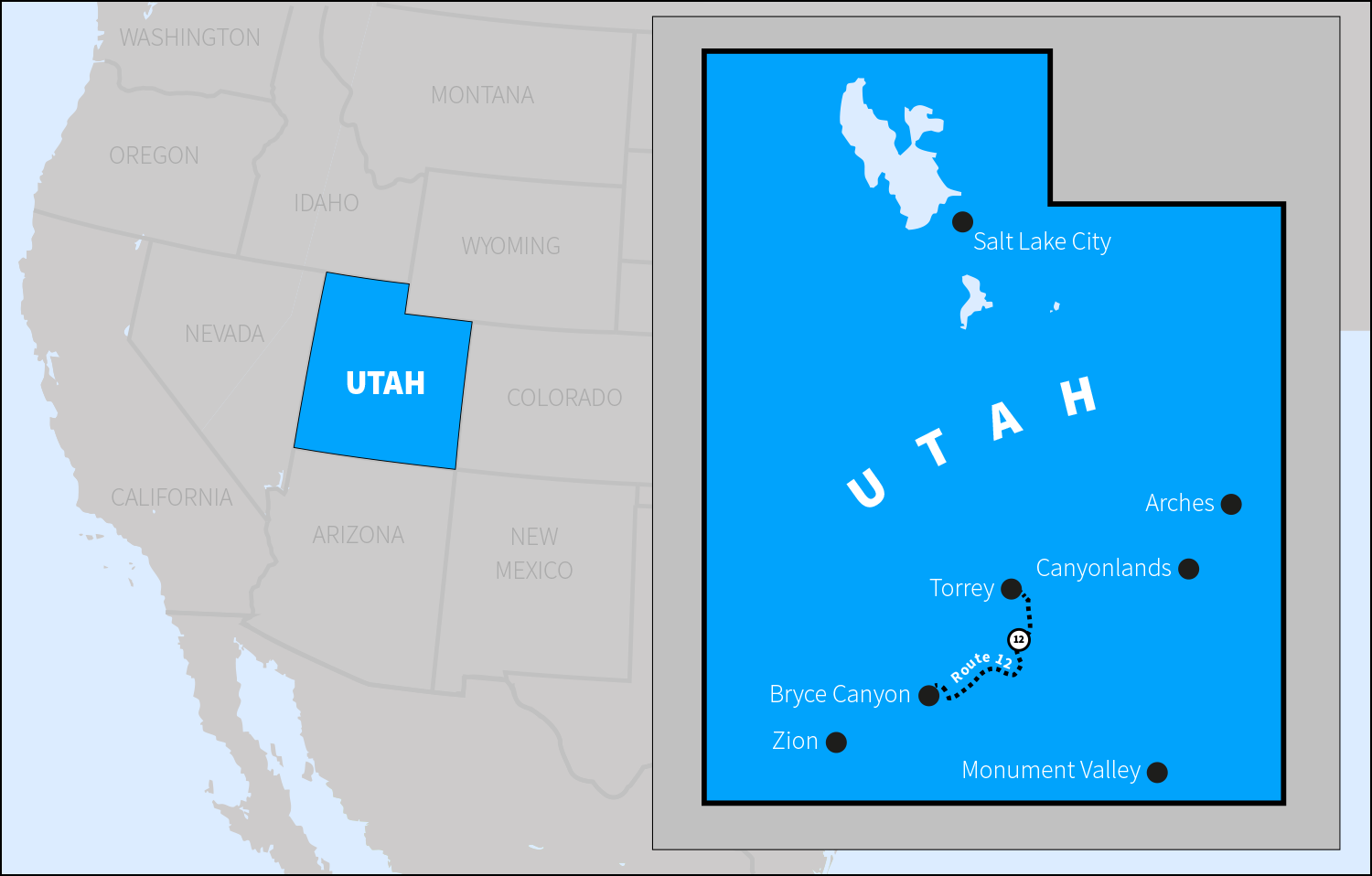
It would be criminal to leave Moab without making at least one stop at Milts, a classic American diner which has been serving Wagyu and local organic beef burgers since 1974. Not only is it a much-loved local institution and a great place to chat to its regulars, it serves what I promise will be one of the best burgers you taste in your entire life.
Moab is situated between the two dramatically different but equally spectacular national parks of Arches and Canyonlands. It is 5 miles north to Arches and 25 miles west to the entrance for Canyonlands.
The smaller of the two, Arches, lies atop an underground salt bed that is responsible for the spires, balanced rocks, sandstone fins and eroded monoliths which make up this stunning and atmospheric park. These arches are so iconic in Utah that they are on the car number plates.
It is possible to see many of the spectacular formations from the road but to properly experience its grandeur and to find some solitude, it is best to make an early start and to hike some of the well-marked trails. Of particular note is the Devils Garden Trailhead in the far north of the park. Don’t be put off by signs warning that the trail is strenuous. While you might need to do some scrambling up and down rocks, the 7 mile roundtrip can be completed at a leisurely pace with plenty of stops for photos, snacks and water in about 5 hours. The trail leads to eight awe-inspiring arches, including Landscape Arch which at just over 300 feet is the longest in the park.
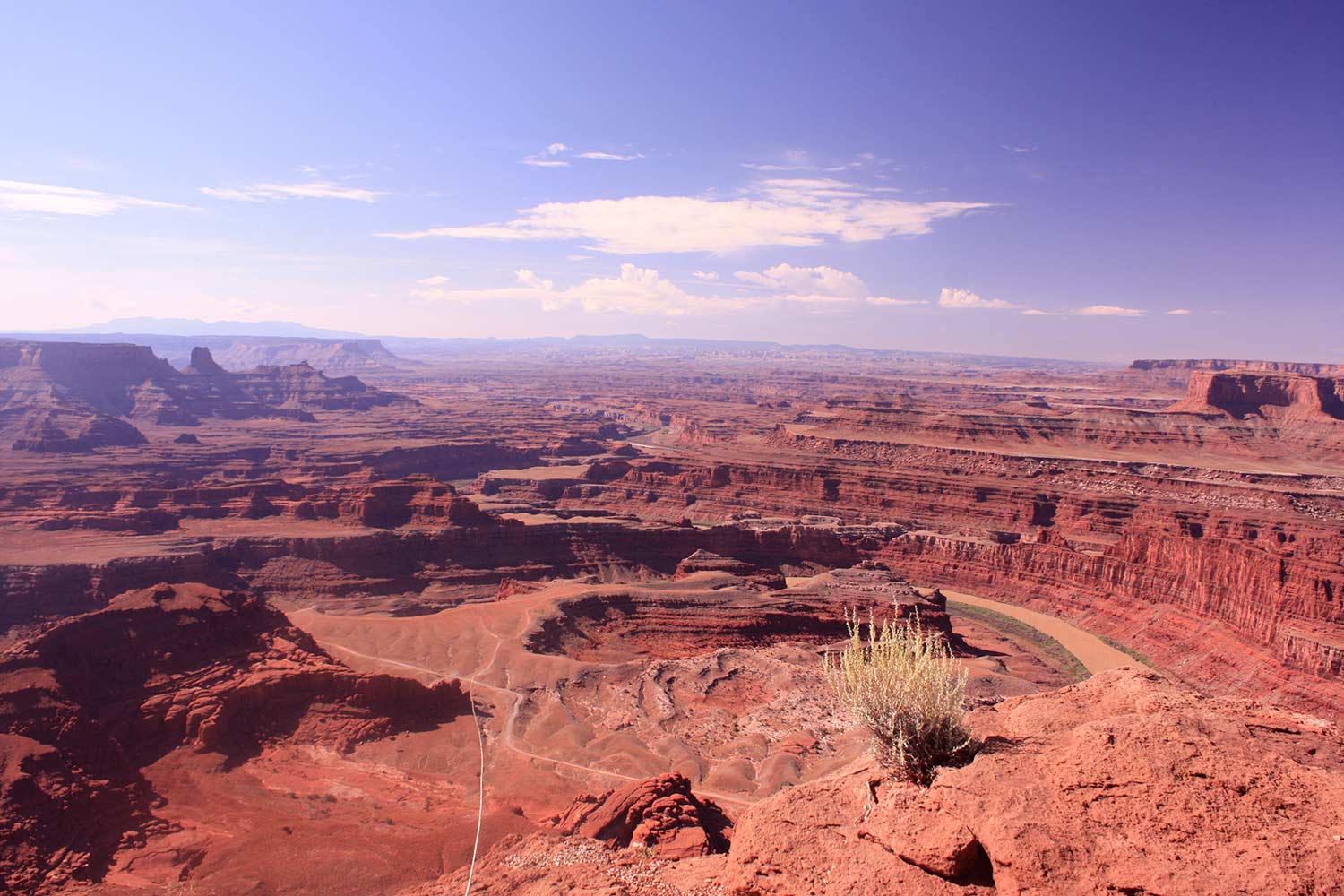
Canyonlands is a vast expanse which has been shaped over millions of years by water and gravity cutting flat layers of sedimentary rock into hundreds of canyons, buttes, arches and spires. At its heart are two canyons carved by the Green and Colorado rivers. Surrounding those rivers are three very different regions; closest to Moab is Island in the Sky in the north of the park; the Maze is in the west; and the Needles in the east. Before the park was established in 1964, few people knew these remote lands – only American Indians, cowboys and uranium prospectors had ventured in to this rugged part of south-eastern Utah. This is Wild West country.
While there are good roads into the Island in the Sky and the Needles areas, venturing into the Maze requires some serious hiking and camping kit and a four wheel drive. If you are visiting the north of Canyonlands, it is well worth stopping off at Dead Horse Point State Park and the dramatic overlook of the same name.
From Canyonlands, my next destination was a leisurely three hour drive just across the state line into Arizona to visit Monument Valley. About two and a half hours in, and 20 minutes after the town of Bluff on this stunning stretch of road, I came to the top of a ridge and in the distance caught a first sight of the familiar outline of Monument Valley rising like Gotham City out of the ground. It’s a memorable moment.
Driving towards it, down the long straight road of Forrest Gump fame, continue around its side and into the park. You really want to book a room at the only hotel in the park, The View. Unfortunately, it has the look and feel of a 1980s conference hotel but no matter. You are here for the view and that is what you get. Each room has a small balcony overlooking the famous buttes. Watching the pinks and purples emerge as dusk and then darkness descend upon the valley is a very special experience.
Another experience not to be missed is the daily outdoor screening of a Western movie in the hotel’s grounds. Sitting with Monument Valley behind your shoulder while seeing it on celluloid as the backdrop for the 1949 John Wayne film She Wore A Yellow Ribbon is a slightly surreal but wonderful way to spend the evening.
Early-to-bed and early-to-rise is a key ingredient of enjoyment for this trip. Watching the sunrise, capturing the early morning light in photos, and starting visits or hikes before the crowds arrive and the temperature starts to get up really does make a difference. This is perhaps most true in Monument Valley.
Having watched the oranges and reds of the sunrise from the balcony, I started the 17 mile self-guided drive on an unpaved road around the park just after 7am and saw only a few other vehicles for the next couple of hours. For generations, the Navajo tribe have farmed and lived in this area. Monument Valley is considered to be the most scenic destination in the Navajo Nation where the elements have carved enormous red-sandstone monoliths into stunning formations. The monoliths, which reach hundreds of feet about the desert floor, stand like soldiers. Driving around them is a strange mixture of being on a Hollywood set and visiting a sacred and spiritual site.
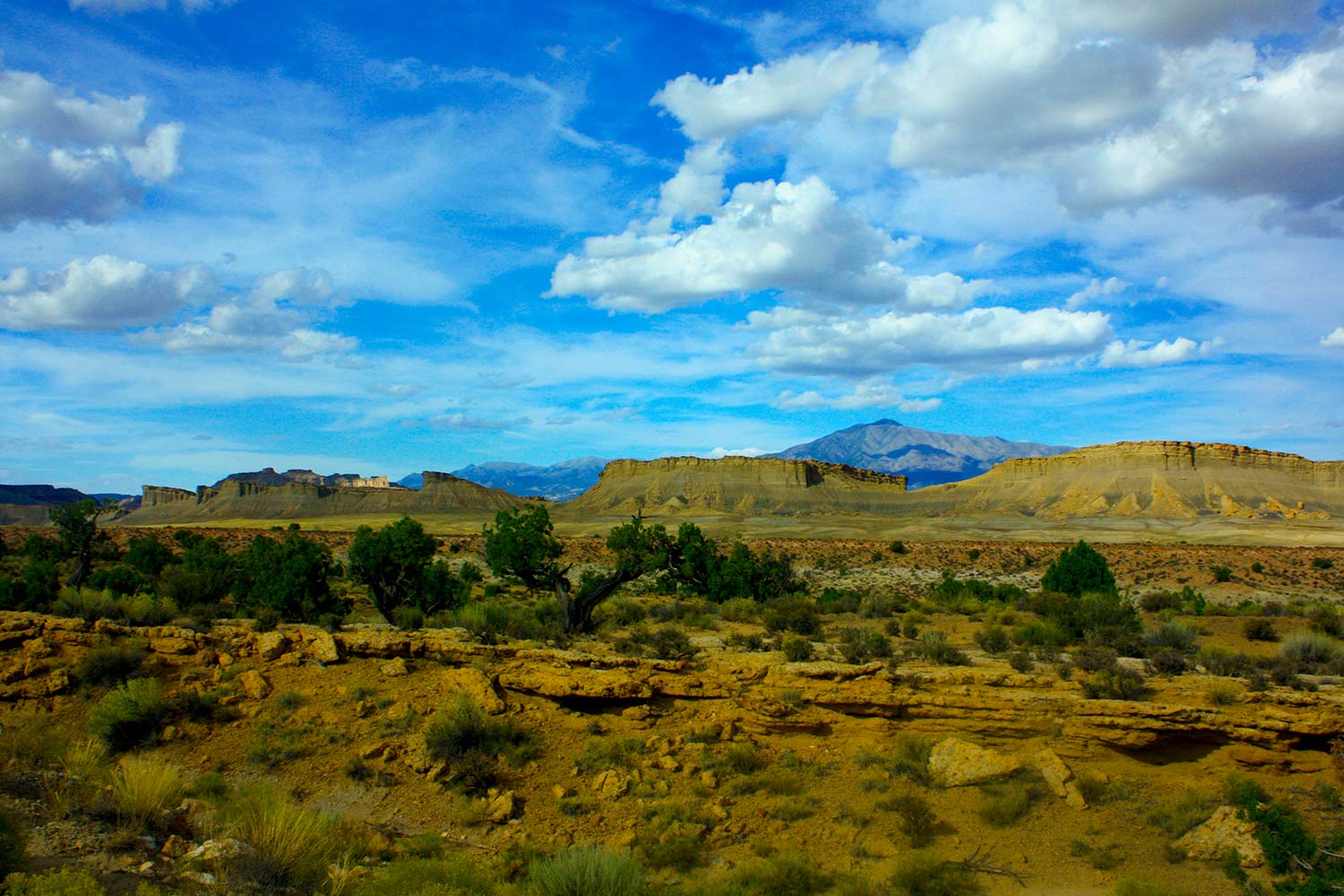
From Monument Valley, I re-traced my route heading back towards Bluff but just after Mexican Hat rocks (look out for them on the right but no need to stop) I took the turning for Gooseneck onto route 316. Pyramid-shaped rocks, reminiscent of Mayan temples, emerge from the ground along the roadside. A few miles later, the speed limit drops from 65 to 45 and then 5 mph as the paving ends and I start to weave up the side of an orange cliff edge. Hairpin bend after hairpin bend took me slowly up the cliff edge in a terrifying yet exhilarating ride. Be sure to stop at the overlook point at the top and glance back on the road from where you have just come. It in incredible vista which affords a final view of Monument Valley in the distance.
Once over the top, I felt a palpable sense of relief that there was no need to weave all the way back down the other side of the cliff. Instead a whole new landscape greeted me. The red desert sand remains but it is now peppered with shrubs and greenery and a view of the Manti La Sal National Forest.
After a night in Torrey – reached via a ferry across Lake Powell from Halls Crossing and the spectacular Burr Trail – today’s source of adventure is Route 12. This is one of the most revered roads in the country and regularly features in the nation’s top 10 road trips. If you have taken the Burr Trail, you might already have been spoiled for dramatic vistas but what makes Route 12 particularly memorable is the variety of landscapes through which you will pass. From the cool pine forests outside Torrey to the dramatic hairpin roads weaving through red rocks to the vast open skies and spaces, you will not be disappointed.
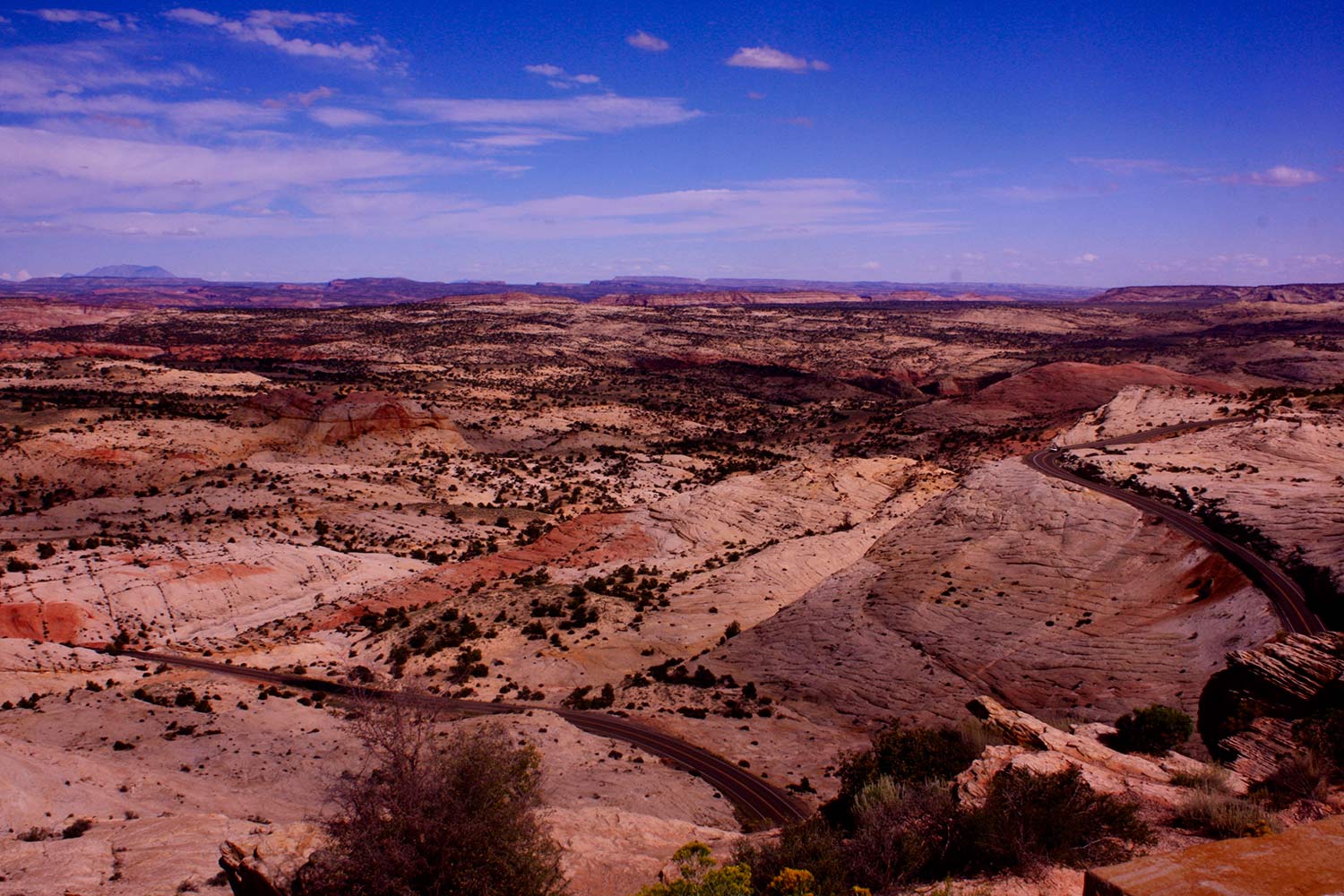
Continuing through Tropic, (about 4 and a half hours from Monument Valley or two hours from Torrey), you will soon arrive in Bryce Canyon “City” and the entrance to this magical, mystical place. It is worth booking a room at the Bryce Canyon Lodge in the park itself. The guide books will tell you that you need to book months, if not years, in advance and that might be true in peak summer season, but I booked a room in September the night before arriving.
Bryce Canyon Lodge is perched 50 metres or so from the canyon rim. It was the brainchild and creation of the railway companies who, while keen to encourage leisure travel to boost passenger numbers, also played a major role (along with local people and nature enthusiasts) in lobbying the US Government to establish Bryce Canyon as a national park and to afford it special protections.
At one level, not much seems to have changed since those days in the 1920s, and the character and look of the buildings have been carefully restored; but you can get decent wi-fi in the reception and unusually for this part of the world the menu is geared towards healthy eating. Eat those fresh vegetables and dressing-free salads while you can.
The park itself is stupendous. If you have lunched in Boulder Town, you should arrive in time for sunset on your first night. Although not as dramatic as a Monument Valley sunset, watching the colours of the rocks changing as the sun goes down in this incredible place is a wonderful sight. Don’t feel obliged to head to Sunset Point. You won’t be alone and a more spectacular view can be had at Inspiration Point a bit further into the park. Amateur enthusiasts and professional photographers along with astronomers head to Bryce all year round and stay long after everyone else has retired to bed; they can be found around the rim studying and photographing the Milky Way. I found them happy to share their knowledge and tips.
To make the most of a full day in Bryce Canyon, get up before first light. Heading towards the rim, you are likely to come across a bold deer or two nibbling the grass right by the lodge entrance. Having watched the sunrise over the canyon, the best thing to do is jump in your car, head all the way to the north of the park and then drive south stopping at each of the marked vista points.
Once you have spent a couple of hours enjoying an overview of the entire park and fuelled up with breakfast, you should leave the car and the “crowds” behind and hike your way into the bottom of the canyon and into the heart of what you have been hitherto viewing from the edge of the rim.
Bryce Canyon is not actually a canyon at all, but the largest of a series of massive amphitheatres cut into the Pink Cliffs. The park’s landscape originated about 60 million years ago as sediments in a lake. The lake has long since disappeared but the sediments created in it and the uplifting of the Colorado Plateau about 16 million years ago have created the famous erosional features known as hoodoos.
Most popular is the Navajo Trail. It is one of the most dramatic but is also the most easily accessible so it is worth heading there one morning as the sun rises and before everyone else sets off. A more tranquil and rewarding route is the Fairylands Loop in the south of the park. It is a four or five hour hike but far enough away from the heart of the park (and a bit longer than most visitors seem to be prepared to hike) to make it possible to metaphorically lose yourself amongst the hoodoos.
Bryce is much cooler than any of the parks previously visited and the weather is more changeable, but this makes for much more pleasant hiking conditions and the ever-changing cloud formations and softer light make it an ideal landscape for photographers.
The final park on the itinerary is Zion which is a couple of hours’ drive from Bryce. At Mount Carmel, instead of heading directly to Zion, I turned left onto highway 89 towards the town of Kanab or, as it is known in Utah, “Little Hollywood”.
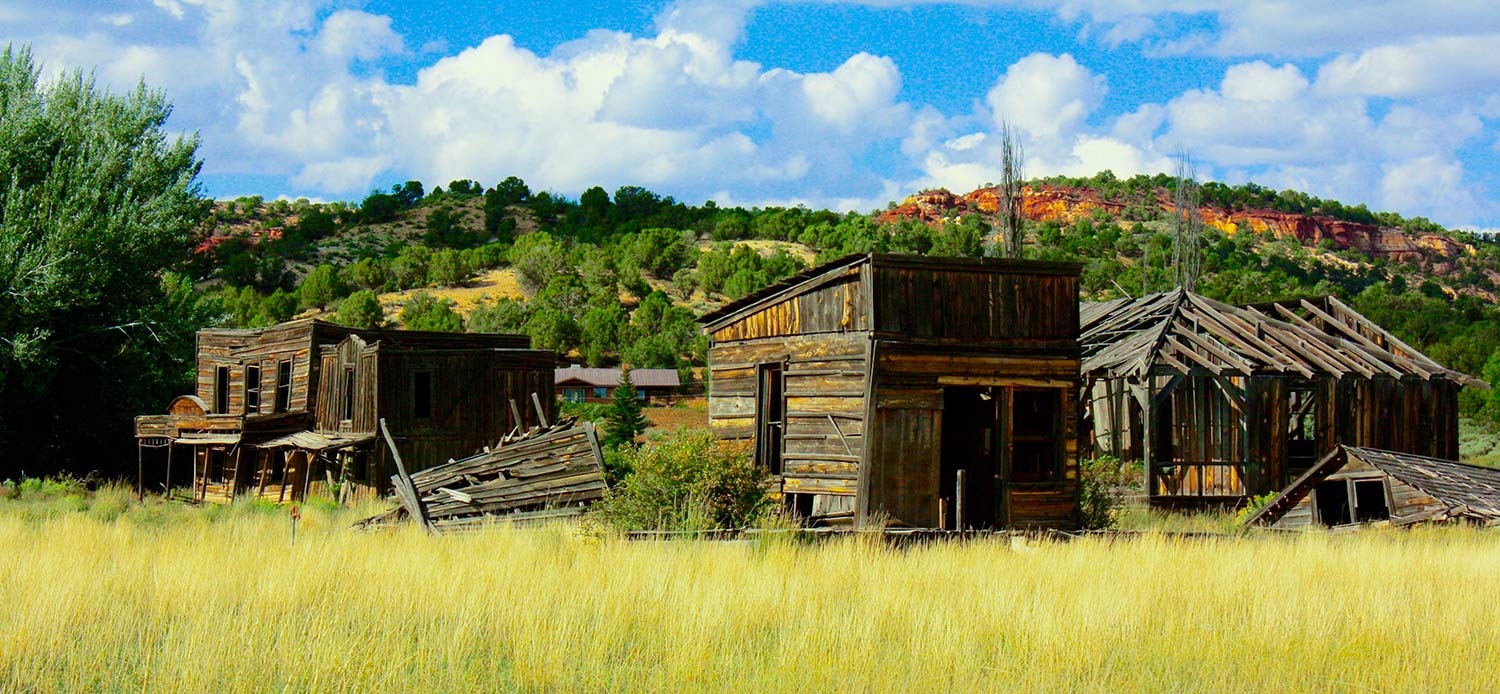
The dramatic scenery and the enterprising efforts of the local Parry brothers, who courted the film studios, created a booming film industry here in the 1920s. Numerous plaques around the town proudly describe the link with various stars of the big and small screens. There is helpful visitor information on Center Street and a couple of museums to explore.
If you enjoyed going off-road on the Burr Trail and want some dramatic photos of a dilapidating Western film set, head east on Highway 89 towards Page. Turn left onto Johnson Canyon Road and the set of Gunsmoke will appear on your right hand side.

From there, the short drive north skirts round the western edge of the 1.9 million acre Grand Staircase Escalante National Monument towards Glendale and back to Mount Carmel and a bed for the night. But not before stopping off in the small town of Orderville, where good fortune meant that I had timed my stay to coincide with the town’s annual Demolition Derby organised by the Lions Club.
Zion is the state’s most visited national park and in the top ten most visited parks in the country. It was possibly a mistake on my part then to head there on Labour Day Weekend. Not only was the rustic Zion Lodge (the only hotel in the park) fully booked, but there was not a bed to be found in the nearest town of Springdale either.
Partly due to visitor numbers and partly due to the layout of the park, Zion is car free. You need to leave your car in one of the car parks and board a shuttle bus which drop visitors off along Scenic Drive in Zion Canyon. It is all well run but does create the feel of a tourist trail rather than the great American outdoors. To make the most of Zion’s grandeur and soaring scenery, it is best to choose a hiking route which takes you away from some of the relatively short trails along Zion Canyon. Angel’s Landing towards the north of the canyon had been recommended and while that trail provides a stunning vista and some incredible hairpin bends and challenging ascents, it didn’t provide any escape from the Labour Day crowds. To get that, I had to head further north west into the heart of the park.
Zion is dramatic and lush and has a very different appearance and atmosphere from the other parks. It is so diverse that 85% of Utah’s flora and fauna are found here. As well as the dramatic sandstone cliffs and rock formations, it is home to spring-feed rock pools and delicate hanging gardens.
To really appreciate all Zion has to offer, it is best to pack the appropriate kit and get away from the main canyon trails. Only that way, will you really be able to soak up its atmosphere and compelling beauty.
If, like me, you are crossing the border into Nevada and flying home from Las Vegas, then stop en route in the town of St George at the Dinosaur Discovery Site at Johnson Farm. Since dinosaur tracks were first discovered in 2000, extensive excavations have unveiled some of the best preserved examples in the world. Excavation works are ongoing and you can watch the palaeontologists at work.
Utah offers stunning and unforgettable scenery. The distances between its parks and places of interest makes it a very manageable destination for a two week road trip. Its Mormon heritage provides a distinctive culture and way of life. And its people are welcoming, friendly and happy to share their favourite views, roads, trails and eateries.
Take their advice, take your time and you will take home some spectacular memories.
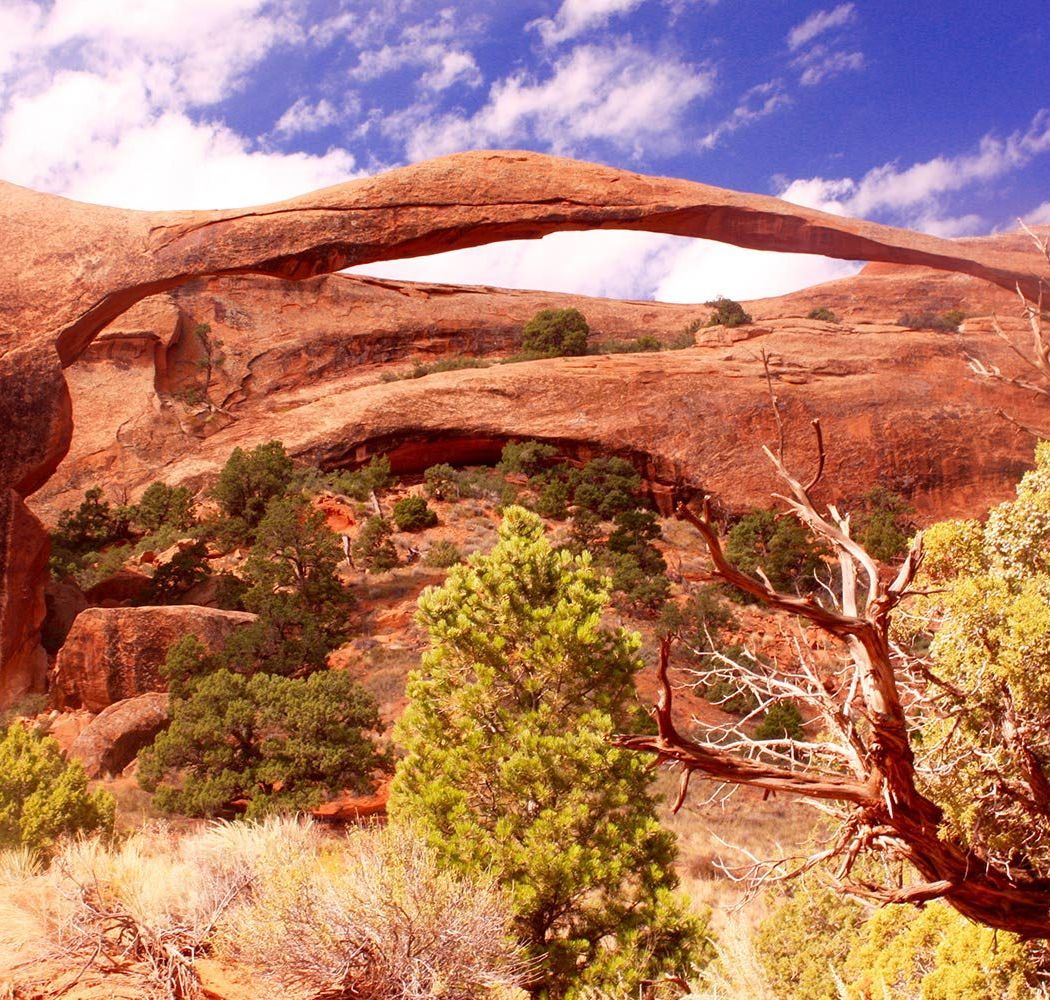
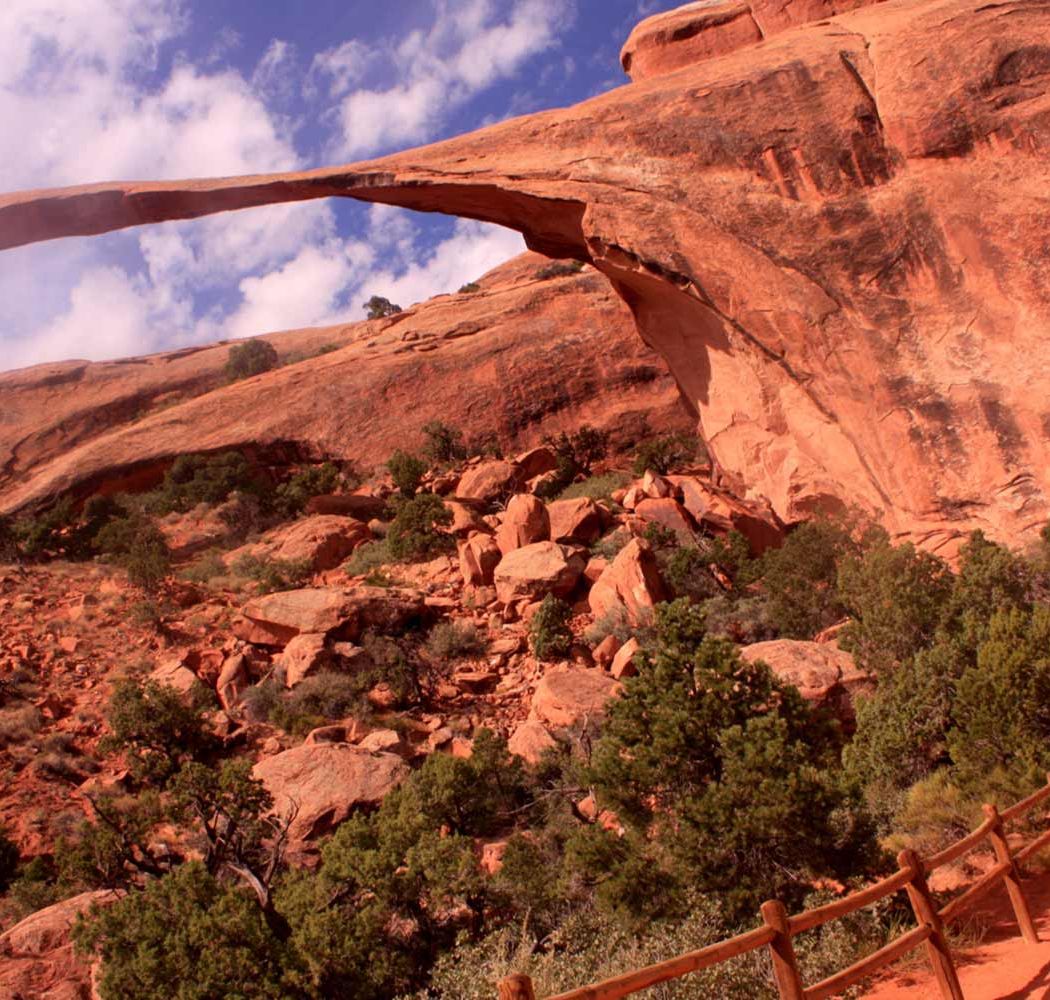

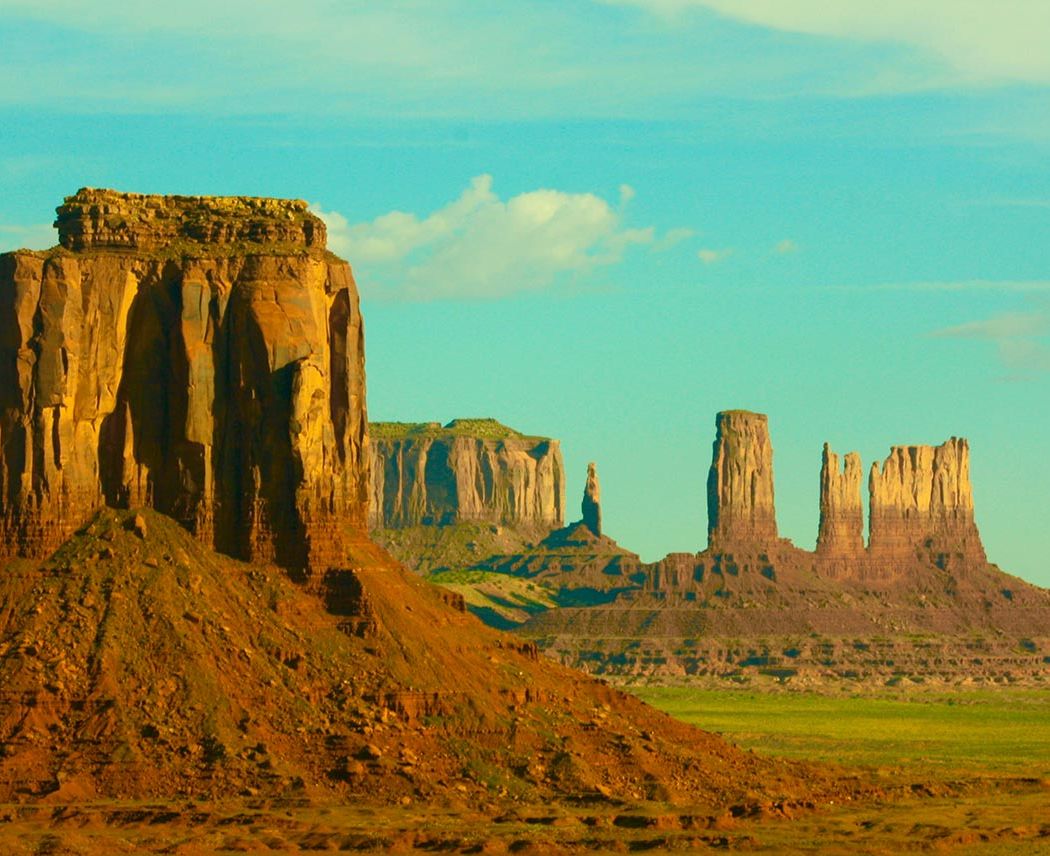
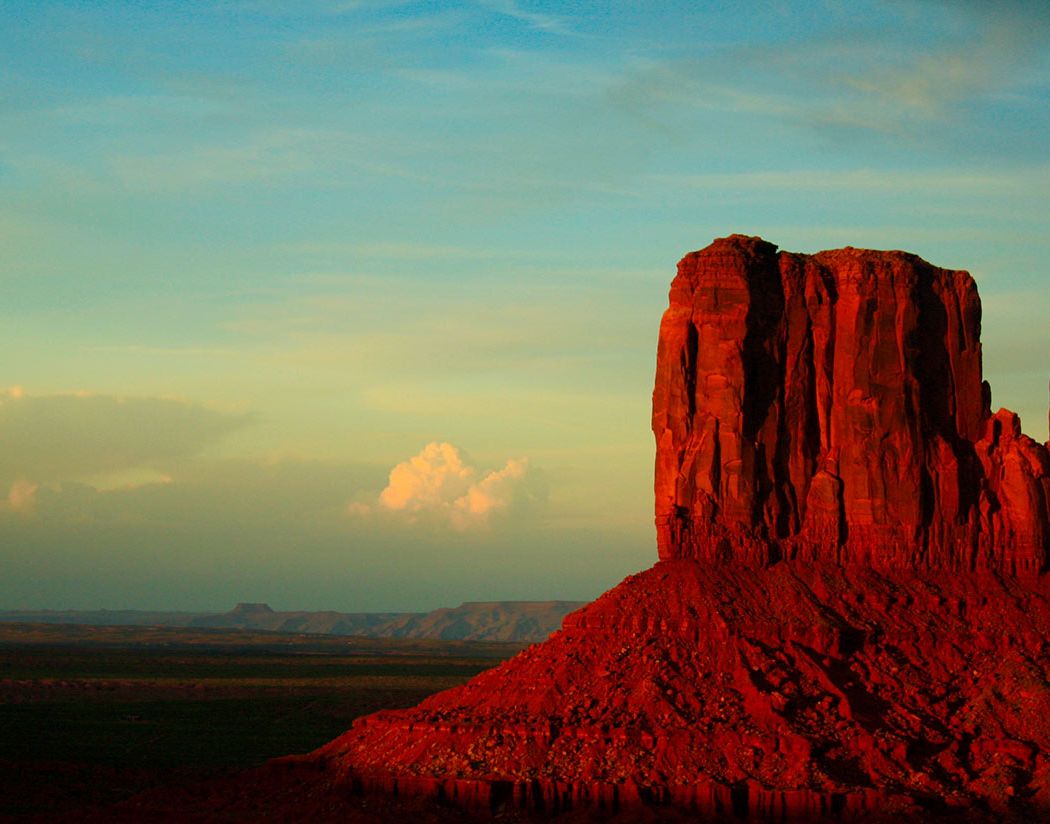
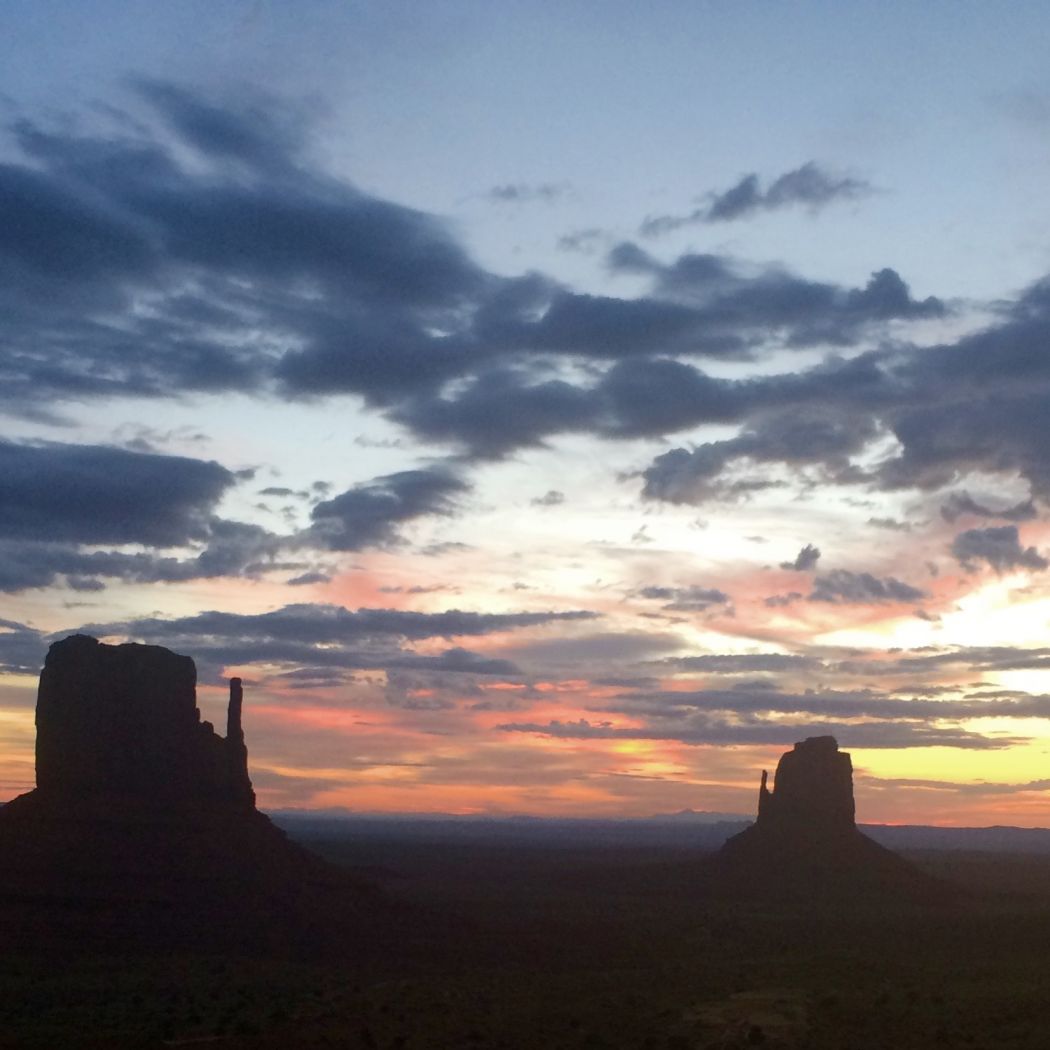
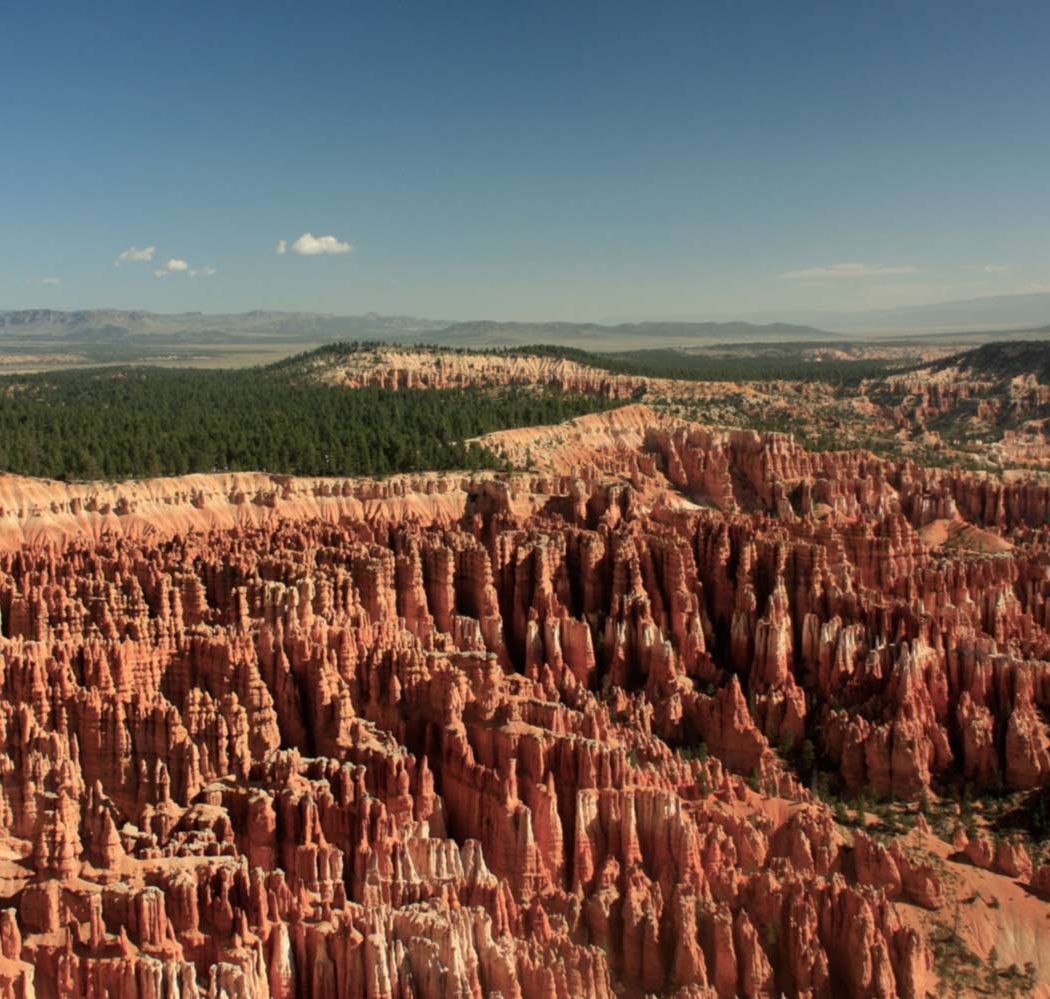
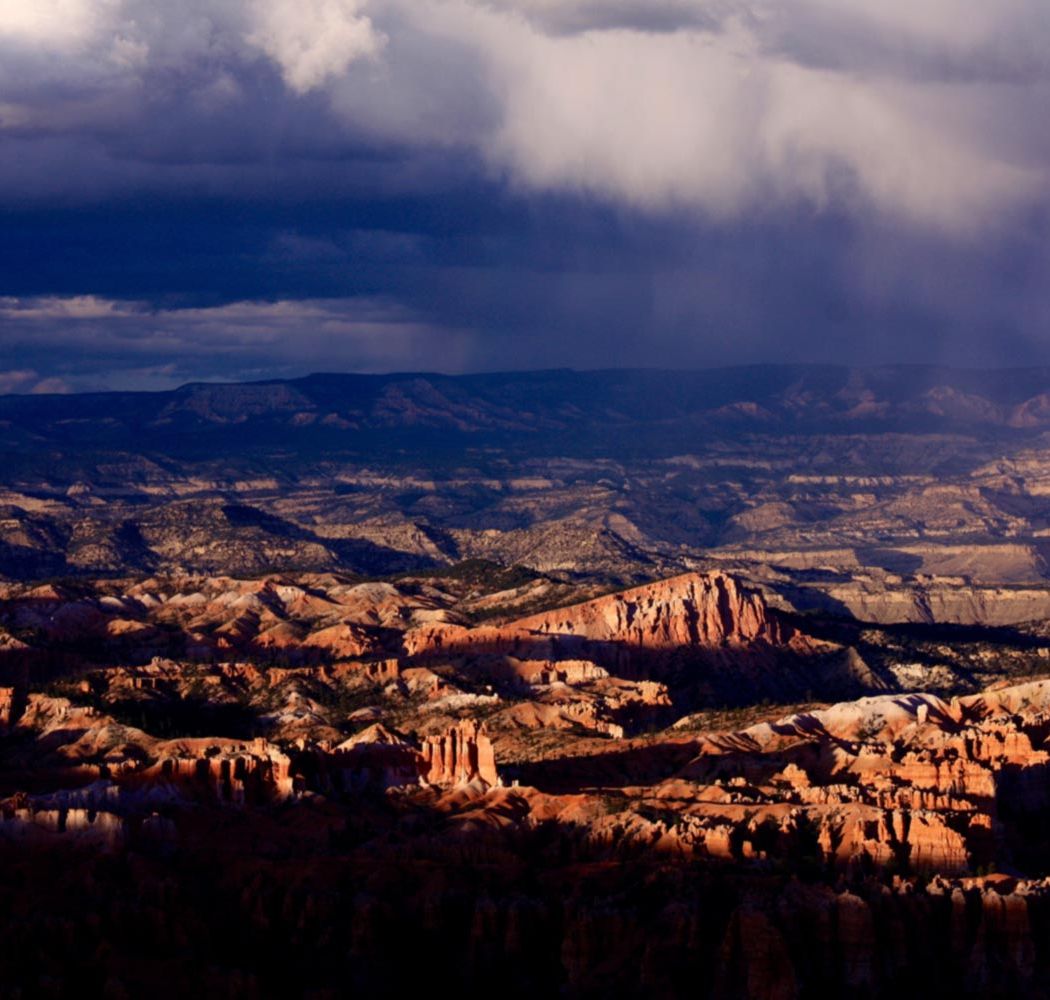
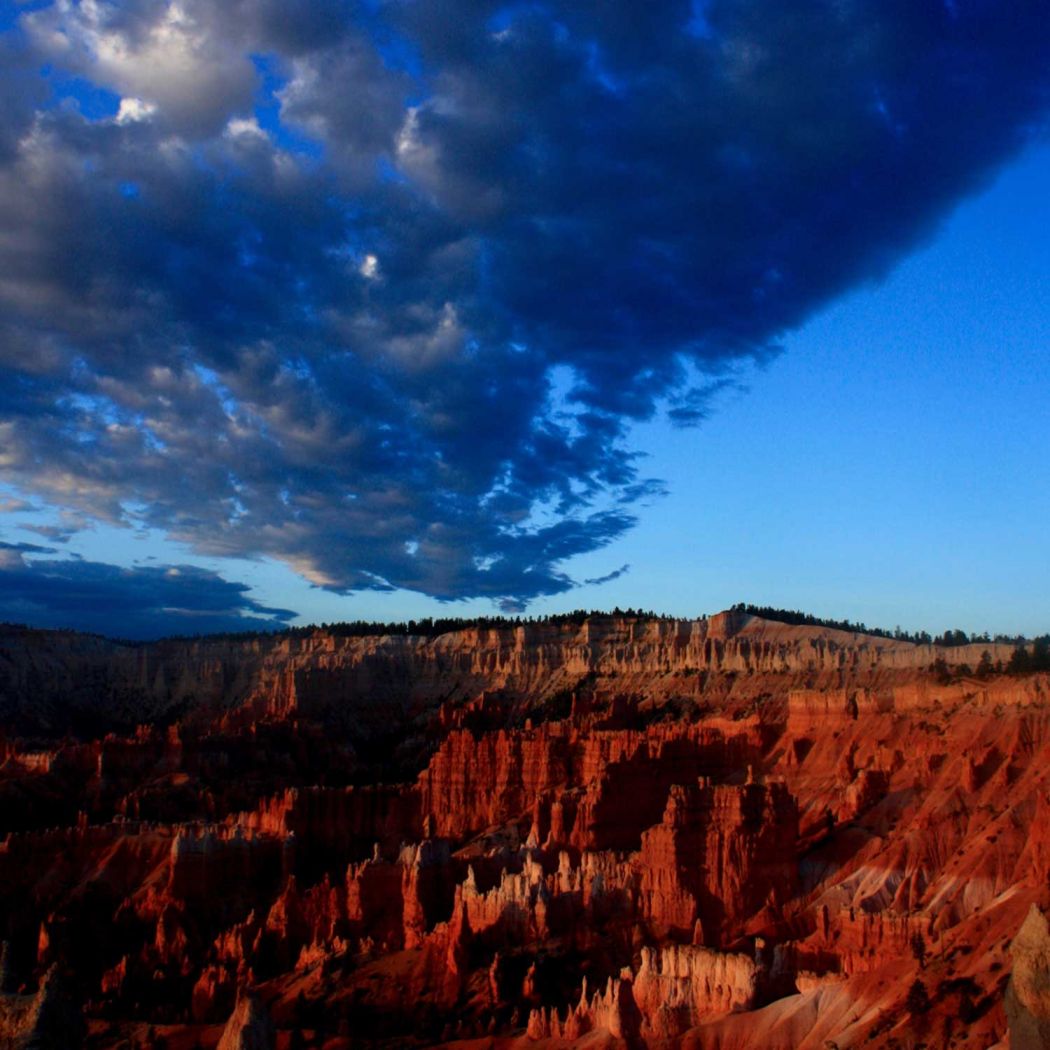



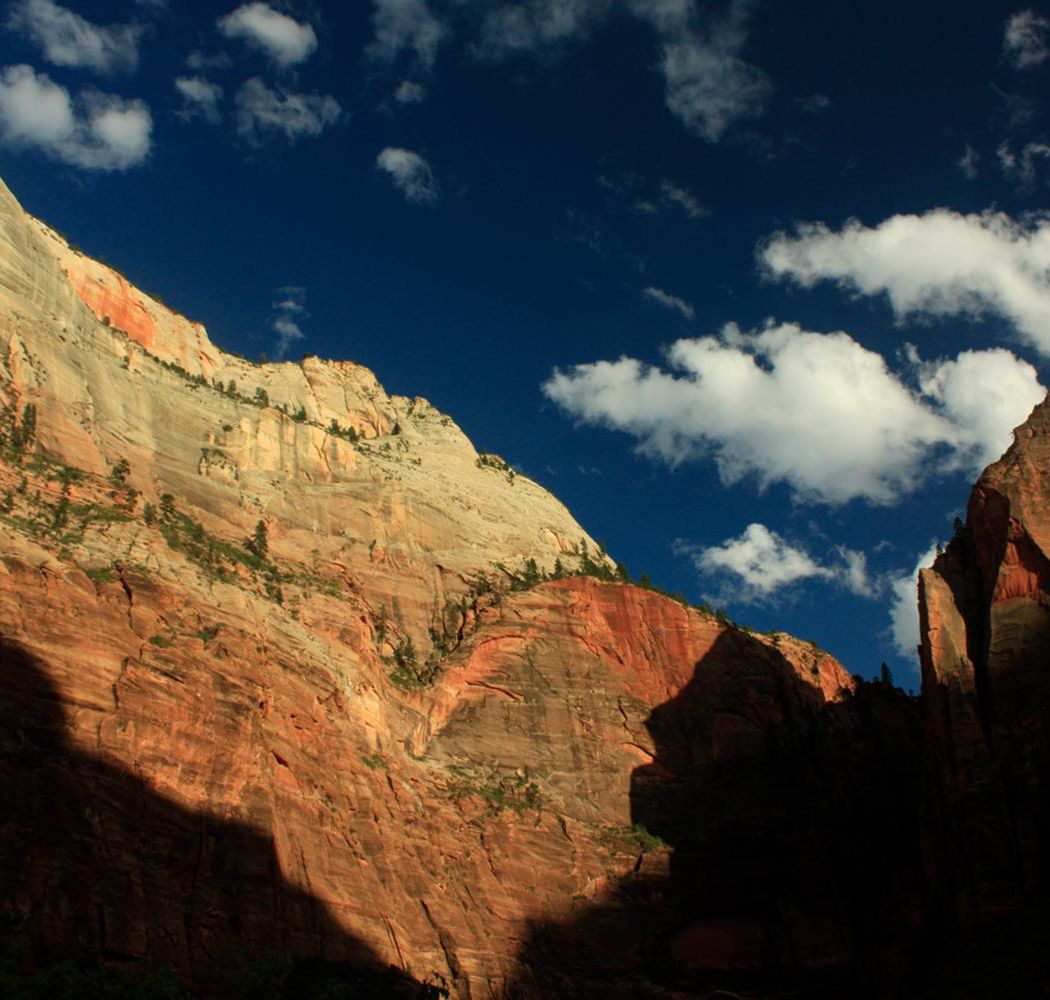
Bryce Canyon looks amazing